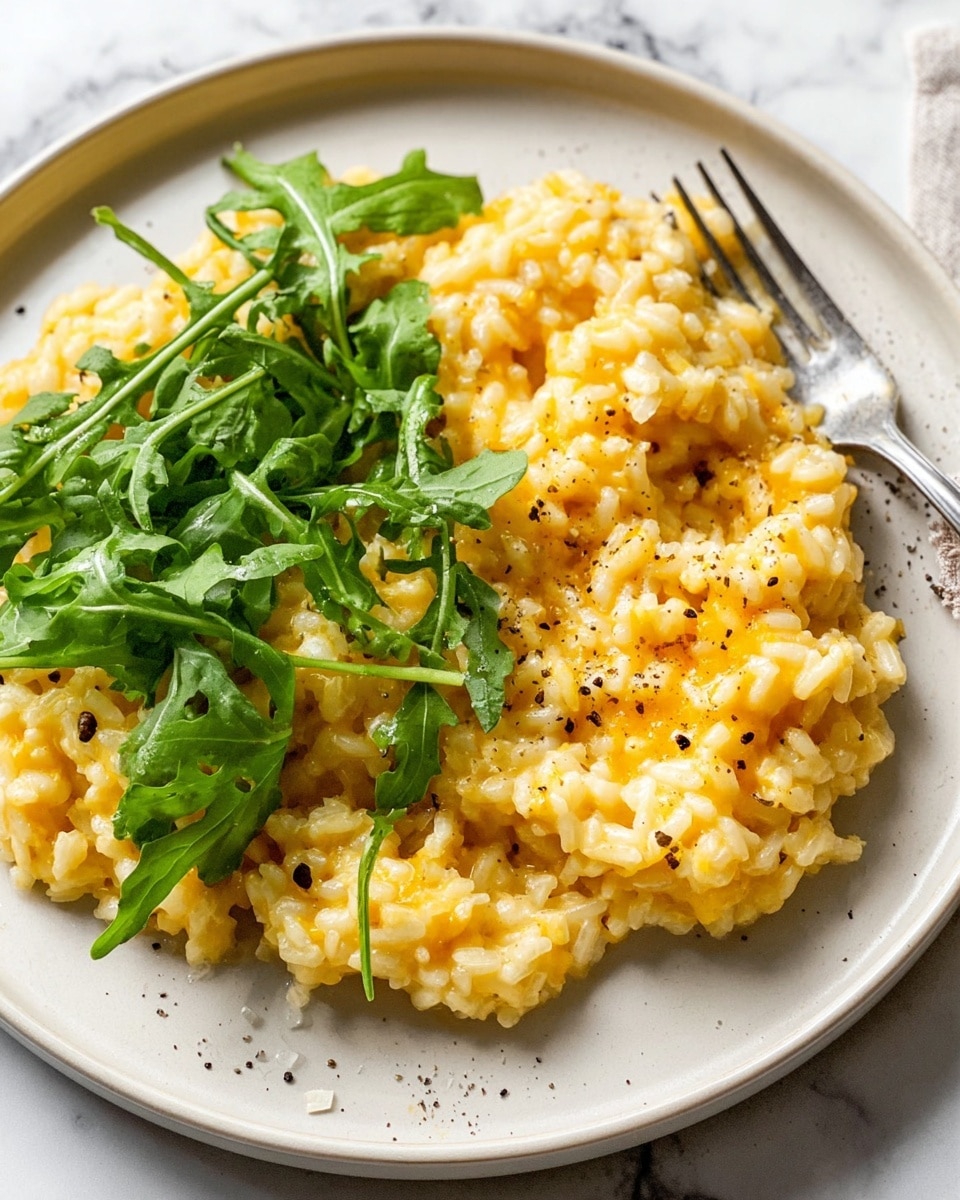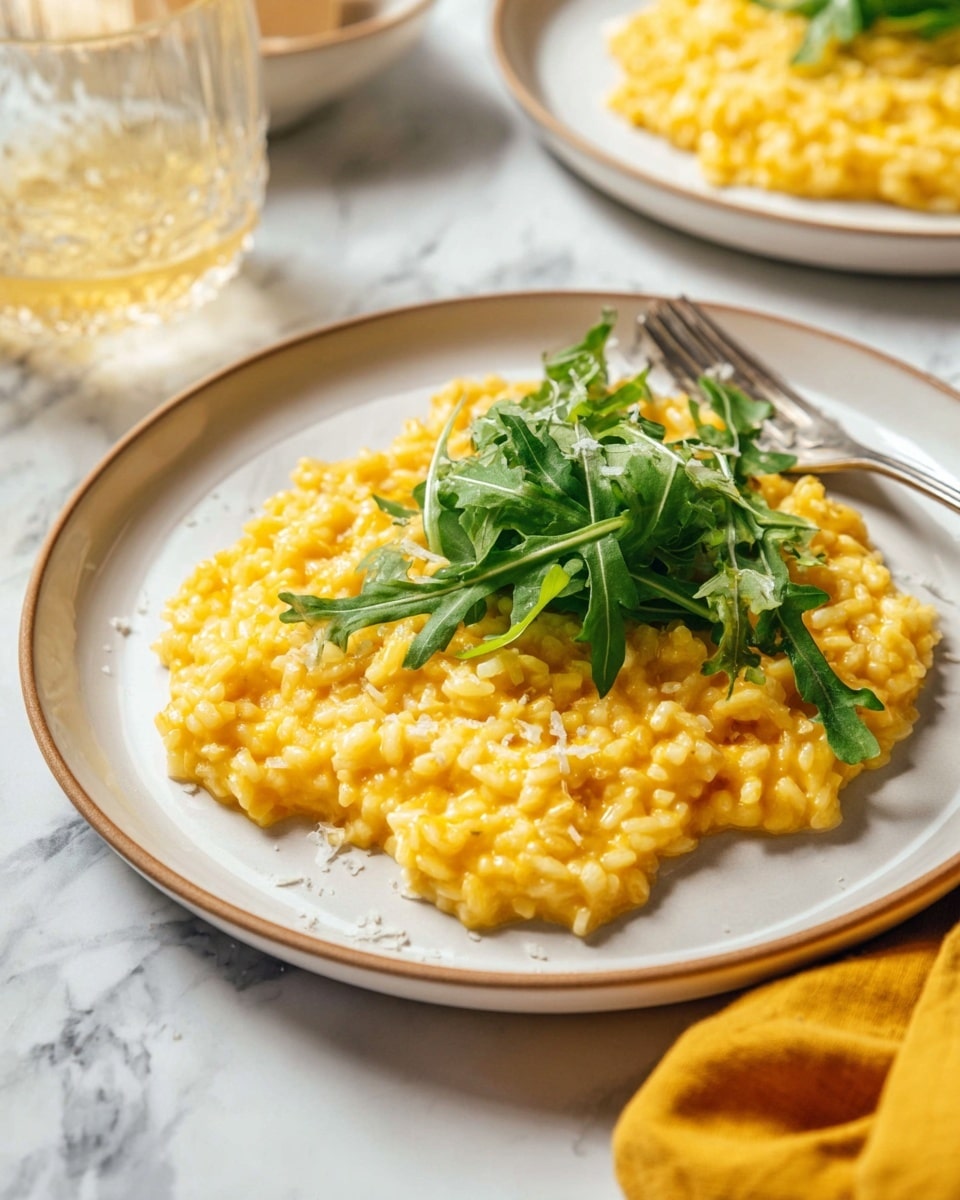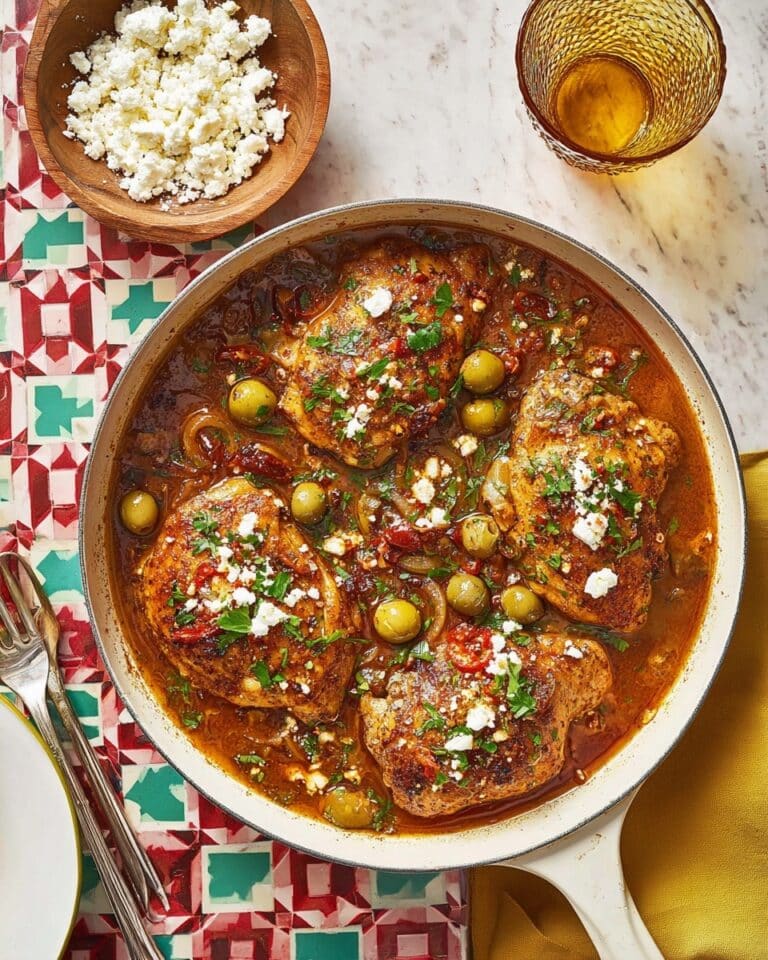I absolutely love how this Butternut Squash Risotto with Sage and Parmesan Recipe brings cozy autumn flavors right to your kitchen. The creamy texture combined with the earthy sweetness of butternut squash and the fragrant hint of sage makes it feel like a warm hug on a chilly day. Whether you’re cooking for a quiet night in or impressing guests at a dinner party, this risotto hits all the right notes each time.
When I first tried making this recipe, I was surprised at how approachable risotto could be—it doesn’t require fancy skills, just patience and a bit of love. You’ll find that the Parmesan adds a salty richness that balances the sweetness perfectly, while the fresh sage lifts the dish with herby brightness. It’s a wonderful way to turn a humble squash into something elegant and satisfying.
Why You’ll Love This Recipe
- Comforting yet elegant: This risotto blends creamy and savory flavors with subtle sweetness for a truly satisfying dish.
- Easy to customize: It works well with chicken or vegetarian broth and allows you to tweak herbs to your liking.
- Perfect for all seasons: While it shines in fall, you can enjoy it any time you crave something cozy and flavorful.
- Great for entertaining: Impress friends and family without spending all your time in the kitchen.
Ingredients You’ll Need
The ingredients for this Butternut Squash Risotto with Sage and Parmesan Recipe work harmoniously to create a dish that’s creamy, flavorful, and fresh. I always recommend using fresh sage and freshly grated Parmesan—it makes a noticeable difference in the taste.
- Chicken broth (or vegetable broth): Use low-sodium to control salt levels and keep the flavors balanced.
- Butternut squash puree: You can roast and puree your own squash or buy it pre-made for convenience.
- Butter or olive oil: Either works well; butter adds richness, while olive oil keeps it lighter.
- Garlic: Chopped fresh garlic provides a warm, aromatic base.
- Shallots: Milder and sweeter than onions, adding subtle depth.
- Arborio rice: The star of risotto, prized for its creamy, starchy texture.
- Dry white wine: Adds acidity and complexity; if you don’t drink wine, you can omit or replace with extra broth.
- Fresh sage: Minced for a fragrant herbal touch that elevates the dish beautifully.
- Parmigiano-Reggiano: Freshly grated for an authentic rich, nutty flavor.
- Salt and fresh cracked pepper: To taste, seasoning is key for balancing flavors.
- Baby arugula: Used as a fresh, peppery garnish that adds a nice bite at the end.
Variations
I love how adaptable this Butternut Squash Risotto with Sage and Parmesan Recipe is—feel free to make it your own! Over time, I’ve played with a few variations that really bring new life to the dish.
- Vegetarian version: Swap the chicken broth for vegetable broth, and you have a completely meat-free meal that’s just as delicious.
- Herb substitutions: Try rosemary or thyme instead of sage if you want a different herbal profile—I’ve done this often, and it’s always a winner.
- Add toasted nuts: Pecans or walnuts sprinkled on top give a pleasant crunch and a complementary flavor contrast.
- Make it spicy: Add a pinch of chili flakes when sautéing garlic for a subtle kick that livens up the dish.
How to Make Butternut Squash Risotto with Sage and Parmesan Recipe
Step 1: Warm the Broth and Butternut Squash Puree
Start by heating your chicken or vegetable broth together with the butternut squash puree in a large saucepan over medium-high heat. Once it reaches a boil, reduce the heat to low and keep it at a gentle simmer. I always taste the broth here to make sure the seasoning is just right—adjust salt as needed. Keeping this warm is essential because adding cold liquid to your risotto will slow down the cooking process.
Step 2: Sauté Aromatics and Toast the Rice
In a separate large heavy saucepan, melt your butter or heat olive oil over medium heat. Add the chopped shallots and garlic, stirring for about 2 minutes until soft and fragrant but not browned. Then, add the arborio rice and cook it for another 3 minutes, allowing each grain to soak up the fat and toast lightly. This step builds the foundation of flavor and gives your risotto its signature creamy texture later on.
Step 3: Deglaze with White Wine and Add Sage
Pour in the dry white wine along with the minced fresh sage. Stir gently until the wine is fully absorbed by the rice. This layer adds a beautiful acidity and aromatic complexity that complements the sweetness of the butternut squash. If you don’t have wine or prefer not to use it, just skip this step and proceed with adding the broth.
Step 4: Slowly Add Broth and Stir
Now for the heart of risotto-making: ladle in a small amount of your simmering broth mixture—about half a cup to start. Stir gently and wait for the liquid to almost fully absorb before adding the next ladle. This process should take about 25 to 30 minutes. I learned the hard way that rushing this step or adding too much liquid too fast results in mushy rice. Stir frequently to coax out the starches, which create that luscious creamy texture everyone loves.
Step 5: Finish with Parmesan and Serve
Once the rice is tender but still has a slight bite in the center, and all your broth is absorbed, remove the pan from heat. Stir in the freshly grated Parmigiano-Reggiano cheese until melted and combined. I like to taste here and adjust salt and pepper if needed. Serve immediately topped with fresh baby arugula and extra cheese if you’re feeling generous. This risotto is best enjoyed right away, while it’s still creamy and warm.
Pro Tips for Making Butternut Squash Risotto with Sage and Parmesan Recipe
- Keep the broth warm: Adding warm liquid keeps the risotto cooking evenly and prevents temperature drops that slow down starch release.
- Use fresh cheese: I always grate Parmigiano-Reggiano fresh because pre-grated cheese can be dry and less flavorful.
- Stir often but gently: Stirring releases starch to create creaminess but be careful not to mash the grains by stirring too aggressively.
- Patience is key: Resist the urge to add too much broth too quickly; slow absorption is what gives risotto its perfect texture.
How to Serve Butternut Squash Risotto with Sage and Parmesan Recipe

Garnishes
I love topping this risotto with fresh baby arugula for a peppery counterpoint to the creamy sweetness. Sometimes, I sprinkle a little extra grated Parmesan on top for a cheesy finish. A drizzle of good-quality olive oil or a few crispy sage leaves fried in butter can take the presentation and flavor up another notch, especially when I’m serving guests.
Side Dishes
To round out the meal, I often pair this risotto with a simple green salad tossed in lemon vinaigrette or roasted vegetables like Brussels sprouts or asparagus. A crusty slice of garlic bread or a light white wine complements it beautifully and makes the meal feel complete.
Creative Ways to Present
For special occasions, I’ve served this risotto in individual hollowed-out mini pumpkins or squash—such a charming way to impress! You can also spread it in a shallow dish and top with fresh sage leaves and edible flowers for a beautiful centerpiece. These touches add a festive flair that your guests will remember.
Make Ahead and Storage
Storing Leftovers
If you have leftover risotto (though it’s hard to resist eating every bite fresh!), store it in an airtight container in the refrigerator for up to 3 days. I recommend layering a piece of plastic wrap directly on the surface before sealing to prevent a skin from forming.
Freezing
Freezing risotto can be a bit tricky because the texture may change, but if you need to freeze it, do so before adding the cheese and arugula. Freeze in a portion-sized airtight container for up to 2 months. When you’re ready, thaw overnight in the fridge before reheating gently.
Reheating
When reheating, add a splash of broth or water to loosen the risotto and warm it slowly on the stovetop or in the microwave. Stir frequently to restore the creamy texture. I add a little extra Parmesan and fresh herbs after reheating to refresh the flavors.
FAQs
-
Can I make Butternut Squash Risotto with Sage and Parmesan Recipe vegan?
Absolutely! Just swap the chicken broth for vegetable broth, use olive oil instead of butter, and substitute the Parmesan with a vegan cheese alternative or nutritional yeast for a cheesy flavor.
-
How do I know when the risotto is done?
Risotto is done when the rice is tender but still has a slight bite in the center (al dente) and the texture is creamy. It usually takes about 25 to 30 minutes of adding broth gradually and stirring.
-
Can I use canned butternut squash puree?
Yes, canned butternut squash puree works fine if you don’t have fresh squash on hand. Just choose a good-quality puree without added sugars or spices for the best results.
-
What can I serve with this risotto?
This risotto pairs beautifully with green salads, roasted vegetables, lightly grilled meats, or simply a crusty bread. I often serve it alongside lemony arugula salad for a fresh contrast.
Final Thoughts
This Butternut Squash Risotto with Sage and Parmesan Recipe holds a special place in my kitchen because it’s both comforting and elegant, making any meal feel a little more special. If you’re new to risotto, give this recipe a try—you’ll find it’s surprisingly manageable and rewarding. I’m sure once you taste that creamy, flavorful bite, you’ll be as hooked as I am. So cozy up, get your stirring arm ready, and enjoy every delicious spoonful!
Print
Butternut Squash Risotto with Sage and Parmesan Recipe
- Prep Time: 10 minutes
- Cook Time: 45 minutes
- Total Time: 55 minutes
- Yield: 4 servings
- Category: Main Course
- Method: Stovetop
- Cuisine: Italian
- Diet: Vegetarian
Description
This creamy and comforting Butternut Squash Risotto combines the natural sweetness of roasted butternut squash with the rich texture of arborio rice cooked slowly in broth and finished with Parmesan cheese and fresh arugula. Perfect as a hearty vegetarian main or an elegant side dish, this risotto offers a beautiful balance of flavors and a luscious creamy consistency without heavy cream.
Ingredients
Broth and Puree
- 3 cups fat free low-sodium chicken broth (use vegetable broth for vegetarian)
- 1 cup butternut squash puree
Risotto Base
- 1 tsp butter or olive oil
- 3 cloves garlic, chopped
- 1/4 cup shallots, chopped
- 1 cup arborio rice
- 2 oz dry white wine
- 1 tbsp fresh sage, minced
Finishing Touches
- 1/4 cup freshly grated Parmigiano-Reggiano
- Salt and fresh cracked pepper, to taste
- 2 cups fresh baby arugula (for garnish)
Instructions
- Prepare broth with butternut squash puree: In a large saucepan, combine the chicken or vegetable broth with the butternut squash puree. Heat over medium-high heat until it comes to a boil, then reduce to a simmer and keep warm on low heat. Taste and adjust salt as needed.
- Sauté aromatics and rice: In a separate large heavy saucepan over medium heat, melt the butter or warm the olive oil. Add the chopped shallots and garlic, then stir in the arborio rice until the grains are thoroughly coated with the fat, cooking for about 3 minutes without browning.
- Add wine and sage: Pour in the dry white wine and add the minced sage. Stir continuously until the wine is mostly absorbed by the rice.
- Cook the risotto by gradually adding broth: Add a ladleful of the warm broth mixture to the rice and stir gently but almost constantly. Wait until the liquid is nearly fully absorbed before adding the next ladle. This gradual absorption and frequent stirring releases starch from the rice, creating the creamy texture risotto is known for.
- Continue cooking until rice is al dente and creamy: Keep adding broth ladle by ladle and stirring until the rice is tender to the bite but still has a slight firmness in the center, and all the broth is incorporated. This process should take about 25 to 30 minutes from the start of adding broth.
- Finish with cheese and seasoning: Once the liquid is fully absorbed and the rice is creamy, stir in the freshly grated Parmigiano-Reggiano cheese. Adjust salt and freshly cracked pepper to taste, then remove the pan from heat.
- Serve with baby arugula: Plate the risotto immediately and garnish generously with fresh baby arugula and optional extra grated cheese for added flavor and texture.
Notes
- Use freshly grated Parmigiano-Reggiano or Pecorino Romano for an intense, authentic flavor unmatched by pre-grated supermarket Parmesan.
- Do not rush the cooking process; let each ladle of liquid fully absorb before adding more to avoid overly watery risotto.
- Frequent stirring is essential to release the starch and develop the creamy texture characteristic of a perfect risotto—you cannot step away during cooking.
Nutrition
- Serving Size: 1 scant cup
- Calories: 249 kcal
- Sugar: 1 g
- Sodium: 461 mg
- Fat: 3 g
- Saturated Fat: 1.5 g
- Unsaturated Fat: 1.5 g
- Trans Fat: 0 g
- Carbohydrates: 45 g
- Fiber: 1 g
- Protein: 7.5 g
- Cholesterol: 5 mg









